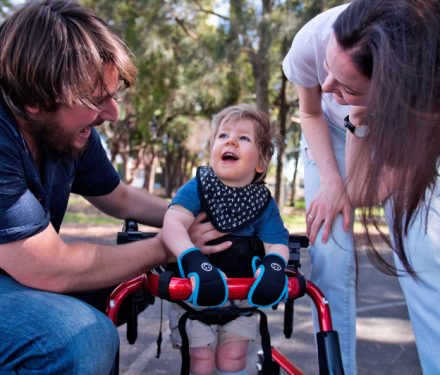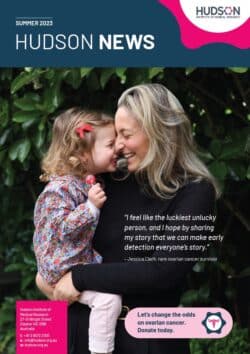New research shows placental stem cells could protect against preterm brain injury
The placenta is a rich source of life for unborn babies, supplying oxygen and sustaining nutrition to the fetus via the umbilical cord.

Now, researchers at Hudson Institute of Medical Research and Monash University have shown that stem-like cells taken from the discarded placenta could give preterm babies the best chance at life by preventing serious brain injury caused by exposure to infection in the womb.
A new preclinical study, led by Professor Graham Jenkin and Associate Professor Suzie Miller’s team in The Ritchie Centre, and published in the journal Cell Transplantation, shows that placental cells called amnion epithelial cells could halt progression of brain damage in utero.
“For the first time, we were able to show these cells protected against a stressful response from sick fetuses and made a significant improvement in brain injury following this treatment,” first author, researcher Dr Tamara Yawno said.
Chorioamniotis is an intrauterine bacterial infection that is a leading cause of preterm birth, as well as brain injury and cerebral palsy.
Babies that survive this type of infection may suffer both localised and widespread brain injury, including lesions in the ‘white matter’ part of the brain, which is connected to the central nervous system and may affect cognition and brain development.
This study used amnion epithelial cells, a highly potent type of stem-like cell that is harvested from a healthy amniotic membrane, part of the placenta discarded in the afterbirth.
The cells were given to a preclinical model of intrauterine infection at the equivalent of 30 weeks gestation, when the fetal brain is most vulnerable to damage, to mimic the effects of being born preterm.
The scientists released 60 million human amnion epithelial cells into the fetus and found that incredibly, cells not only travelled to sites of infection in the ‘white matter’ part of the brain, but reduced signs of brain damage.
“Amnion cells were found in the brains of these fetuses, and we showed they were able to repair and protect against damage that would have normally occurred as a result of this type of infection,” Dr Yawno said.
“These cells have proven anti-inflammatory properties in other diseases, and we’ve now shown that when applied 24 hours after infection, they are neuroprotective.”
Research group heads A/Prof Suzie Miller and Prof Graham Jenkin said that currently, there are no available treatments aimed at preventing brain injury following preterm birth, and this study provides vital data that supports the use of amnion cell treatment in these babies.
“These cells could one day be given as a treatment to babies, shortly after delivery, to protect their brains against the risk of serious injury due to infection, giving them the best chance of living a normal and healthy life,” they said.
CLICK HERE to read Herald Sun article ‘Placental cells may hold hope for preterm brain injury and cerebral palsy’ published on 25 May 2017.
Contact us
Hudson Institute communications
t: + 61 3 8572 2697
e: communications@hudson.org.au



